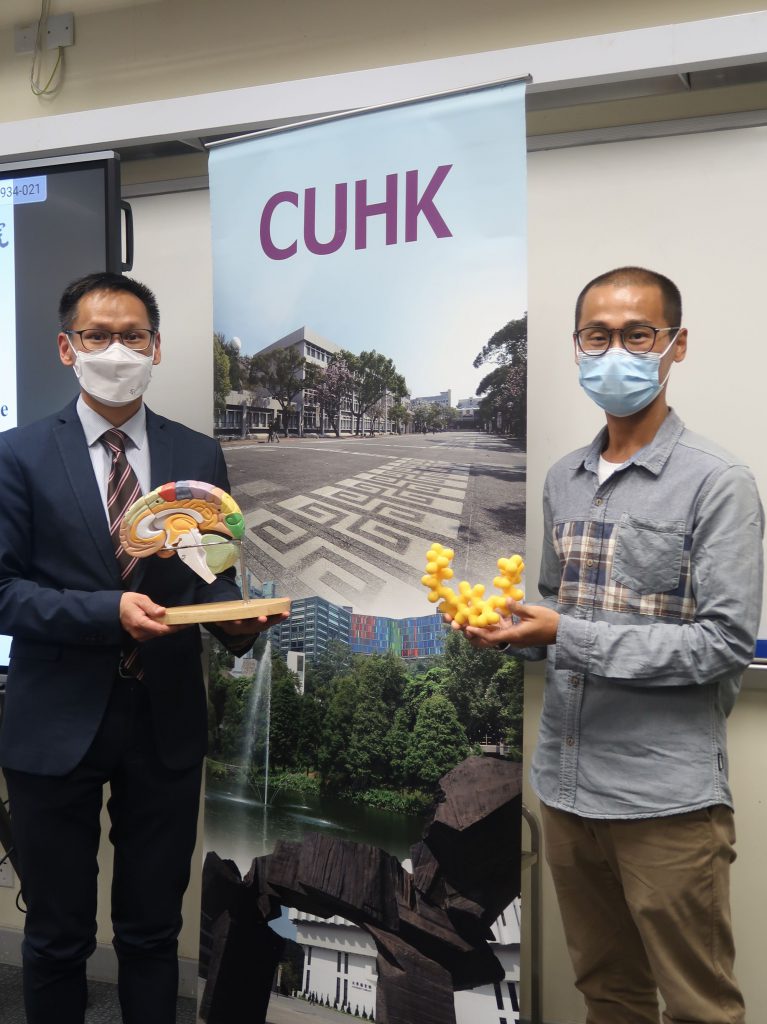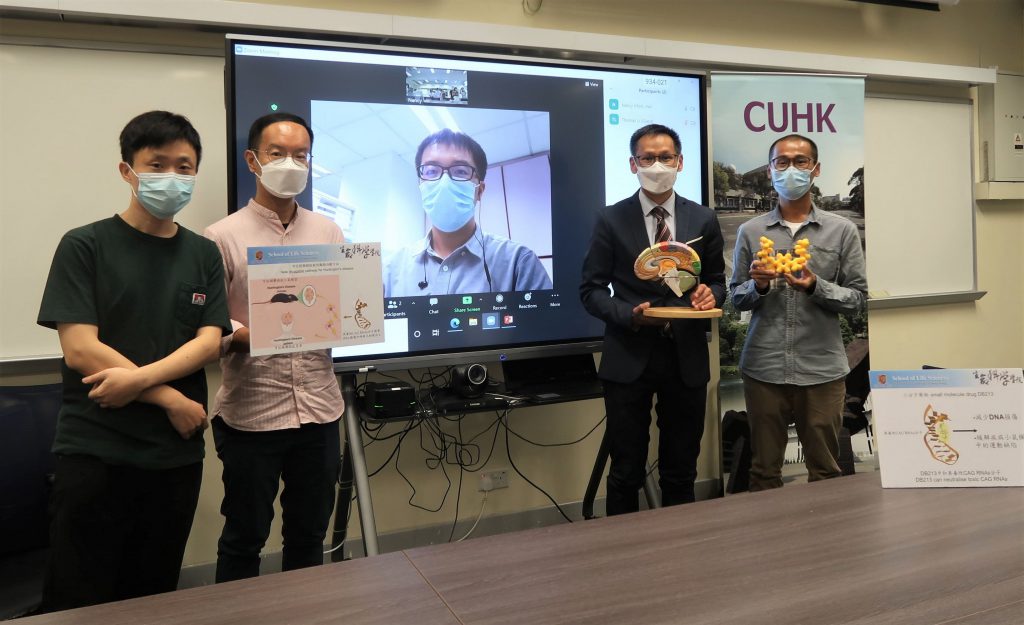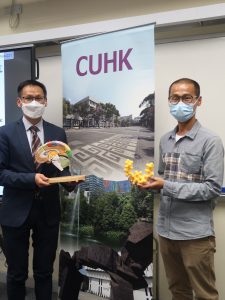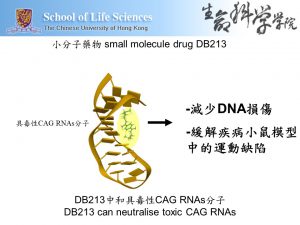CUHK
News Centre
CUHK Unveils a Toxic RNA’s Role in Neuronal DNA Damage and Develops New Therapeutic Direction for Huntington’s Disease
Professor Ho Yin Edwin Chan from the School of Life Sciences of The Chinese University of Hong Kong (CUHK), in collaboration with scientists from the University of Illinois at Urbana-Champaign, USA and the University of Pisa, Italy, has recently unveiled how a special RNA species called small CAG repeat RNAs (sCAG) plays a destructive role in the pathogenesis of Huntington’s disease (HD) by causing damage to the genetic materials in the genome. This is the first study that demonstrates sCAG are sufficient to induce neuronal DNA damage. The research team believes that the findings can help develop new treatments for HD. Experiments in mouse disease models have shown positive therapeutic effect in reducing the DNA damage in HD mice.
A genome is analogous to a bookshelf which stores all the books (genetic materials) that make a living organism, including humans. Professor Chan’s team showed that when sCAG accumulates in nerve cells at a high enough level, the normal function of NUDT16, an important factor responsible for safeguarding the integrity of the genome bookshelf, will be compromised. Reducing NUDT16 functionality results in rapid accumulation of genome damage in the brain cells and, eventually, triggers neuronal degeneration and cell death. On the other hand, restoring the normal function of NUDT16 can rescue DNA damage and apoptosis in HD models.
HD is an adult onset rare genetic disorder. Symptoms of HD usually start when patients are in their mid-30s or 40s. As the disease advances, patients experience progressive decline of their body movement control and cognitive thinking ability due to the continuous malfunctioning of nerve cells in their brains. Some patients further experience psychiatric disturbances. There are HD cases in Hong Kong and mainland China. However, medications are only for symptoms management, and at this moment HD remains an incurable condition.
A small molecule compound capable of rescuing motor symptoms in Huntington’s Disease mice
Professor Edwin Chan, Postdoctoral Fellow Dr. Isaac Peng, and the team further discovered a small molecule compound termed DB213 which can significantly restore motor deficits in mice that contract Huntington’s disease. Using nuclear magnetic resonance spectroscopy, the team determined the solution structure of the DB213/sCAG complex, enabling them to visualise how the compound docks onto the toxic sCAG. This patent-protected technology provides a basis for the team to further modify the compound for achieving higher therapeutic effects against HD.
Professor Chan said, “Our team is very grateful for being able to put one more jigsaw piece to the puzzle in explaining how HD comes about. Our research findings further enable us to apprehend, at the atomic level, how the DB213 small molecule neutralises RNA toxicity and relieves HD symptoms. When the compound was administered to primary neurons and diseased mice using an intranasal route application, we found that the compound significantly suppresses DNA damage in the cells and restores the behavioural phenotypes in diseased mice. We are happy to see that this compound can go to the brain by itself when applied through the nostrils, further highlighting its therapeutic potential. We are now ready to bring this study to the preclinical stage. Other than HD, our compound can also be utilised in several types of Spinocerebellar Ataxias, another group of rare neurological diseases.”
The research findings have been published in the prestigious scientific journal, Proceedings of the National Academy of Sciences USA. The full text of the research paper can be found: https://doi.org/10.1073/pnas.2022940118. This work was generously supported by the General Research Fund of the Research Grants Council of Hong Kong, and The CUHK Vice-Chancellor Discretionary Fund and Gerald Choa Neuroscience Centre.
Establishing a Huntington’s disease Patient Registry for Hong Kong
Professor Chan is currently establishing a HD Patient Registry for Hong Kong with the aim to support long-term clinical care of HD patients and to facilitate translational biomedical research. A rare disease patient registry is a collection of standardised information about individuals diagnosed with a particular rare disease. It is two-way communication platform for clinicians/scientists to disseminate new clinical and research information to patients and their caretakers, and to collect feedback from the patients’ side. The ultimate goal of setting up such a HD patient registry is to prepare Hong Kong to join the Enroll-HD programme which provides new drug clinical trials opportunities for HK patients worldwide.
Brief biography of Professor Ho Yin Edwin Chan
Professor Ho Yin Edwin Chan is Professor in the School of Life Sciences, CUHK. He received undergraduate training in biochemistry from CUHK, doctoral training at The University of Cambridge (UK), and postdoctoral training at The University of Pennsylvania (US). Since 1999, Professor Chan has been investigating rare neurological and neuromuscular disorders. In 2014, he established an intercontinental research collaboration network on rare neuronal diseases, including amyotrophic lateral sclerosis/frontotemporal dementia, Huntington’s disease, myotonic dystrophy and spinocerebellar ataxias. He is a Founding Member and Executive Committee member of The Young Academy of Sciences of Hong Kong. Professor Chan actively participates in community services, including as chairperson of the scientific and medical advisory committee of Hong Kong Spinocerebellar Ataxia Association, and Founder of Nexus of Rare Neurodegenerative Diseases. He is currently coordinating the establishment of a patient registry of Huntington’s disease for Hong Kong.











